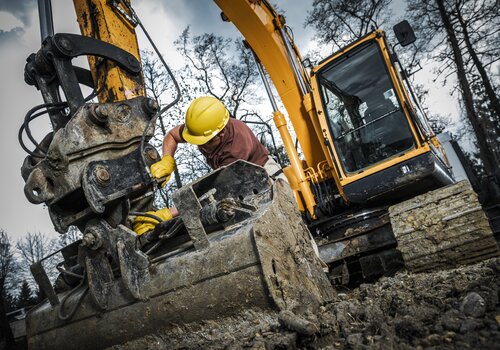In 2020, the world saw COVID-19 impact every home – and industry – on the planet. Workers were sent home, left to wonder if they would have a job to return to if we all survived the pandemic. The world came to a standstill, and we continue to deal with the effects today. From supply chain issues to cost increases, materials sourcing for the construction industry is uncertain at best.
What Happened
We know COVID-19 was the impetus, but that had specific consequences for materials providers and supply chain logistics. With limited to no workers available and government regulations, many factories closed. This created a huge backorder for many supplies, like we saw with the computer chip shortage.
Construction projects suffered by being delayed or even cancelled for the near future. With no workers, no supplies and government-instructed closures, the industry stopped.
Once we got through the initial shock of COVID-19 closures, construction projects slowly started up again. However, materials suppliers came back to work with a massive backlog and a severely limited number of workers. Coming out of COVID-19, the materials industry was essentially starting from less than zero.
Because of this, costs increased. We expected inflation but didn’t necessarily consider how quickly prices would become inflated. For example, plywood prices increased about 30% between December 2019 to December 2020, which is high but not surprising given the pandemic. However, plywood prices increased from 30% to about 107% between January and July 2021. That is a massive jump in a small amount of time.
As with everything else, energy prices also increased. Materials like steel and concrete require a lot of energy to produce, so contractors were responsible for paying the higher prices. Contractors were forced to bear higher costs with ongoing projects just to stay in business. Profit margins decreased significantly, so they also needed to increase prices just to keep up with materials alone.
The supply chain was hit with a double problem. First, COVID-19 like everyone else, but then February 2022 brought the war in Ukraine. Russia was a big supplier of metals like copper and aluminum. Prices had already increased, but they increased again once Russia invaded Ukraine.
Where We Stand Now
Fitch Ratings anticipates weaker demand with a moderate decline in non-residential construction. Consumers are also dealing with inflation, meaning disposable income rates are sinking, and interest rates won’t be reduced until mid-2024 at the very soonest.
But there is some good news on the materials front: Gordian predicts that costs will remain high but may stabilize. Some prices, like steel, are getting closer to pre-pandemic levels. So, even though costs are increasing, it will likely be less than 5% yearly.
What You Can Do
Navigating the materials landscape can feel hopeless, but there is good news on the horizon. In addition, there are steps contractors can take to mitigate the materials shortage and keep productivity – and profits – up.
-
Map out the purchasing process.
If spreadsheets aren’t your forte, find a Type A colleague. Track every single step of your materials procurement process. Make note of the people involved and how long each step takes to deliver. This will help you generate a better timeline for when your materials will be delivered.
Bonus tip: Create a contingency plan. While planning can reduce your risk of running out of materials, prepare for the worst. Review previous projects that have been similar, point out any issues that arose then and prepare just in case they happen now. Monitoring weather conditions can help you track any potential delivery issues. -
Be honest.
Your customers need transparency and when potential issues are communicated promptly, you’re more likely to leave with a happy client. Tell them about the materials shortage upfront and let them know you’ve built that into the projected timeline, but also inform them that things can get delayed. Open communication improves your relationship with the client and shows them that you are doing everything you can to deliver quality, even if it takes a little longer than anticipated due to the materials shortage. -
Pre-order your materials when possible.
You know your business best. If you utilize a particular material more than others, go ahead and order those materials in advance. There’s less of a risk of having leftovers and ordering in advance means you’ll have it on hand as soon as you need it. Keep track of your inventory, look out for potential shortages and order accordingly.
Bonus tip: Repurpose your materials. If you end up with more materials from one project, use them in other places where they may be needed. Whether you need more plywood for a project or could use an extra shelf in the office, there are ways to make your materials useful in any situation. -
Be flexible.
Though material prices may stabilize in 2024, life happens. If there’s anything we learned from COVID-19, it’s the importance of being flexible in the face of adversity. Be ready to adjust budgets and timelines as best as you can. - Review & revise.
Each project can teach you something new and so can each materials supplier. Review the timelines, the materials used and unused and any delays you encountered. Understanding your supplier and supplies will help you in future projects.
Photo credit: PRAMOTEBIGSTOCK/SHUTTERSTOCK.COM












